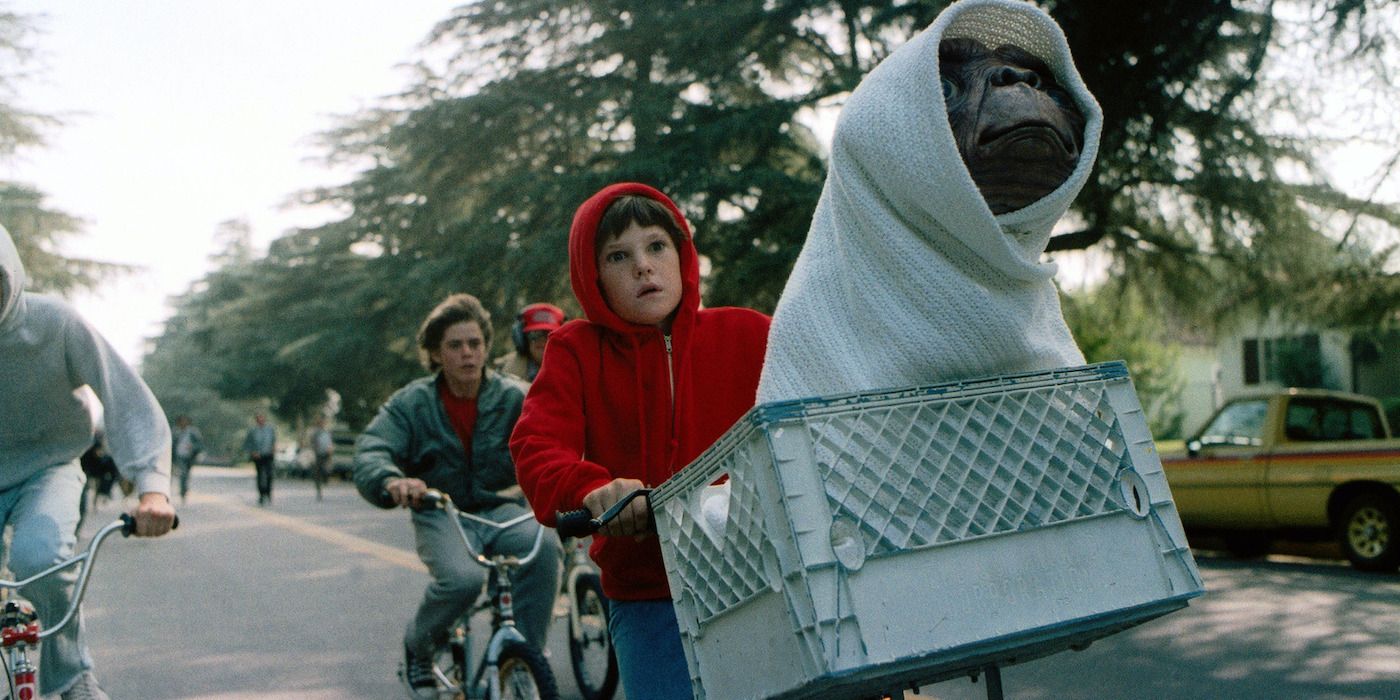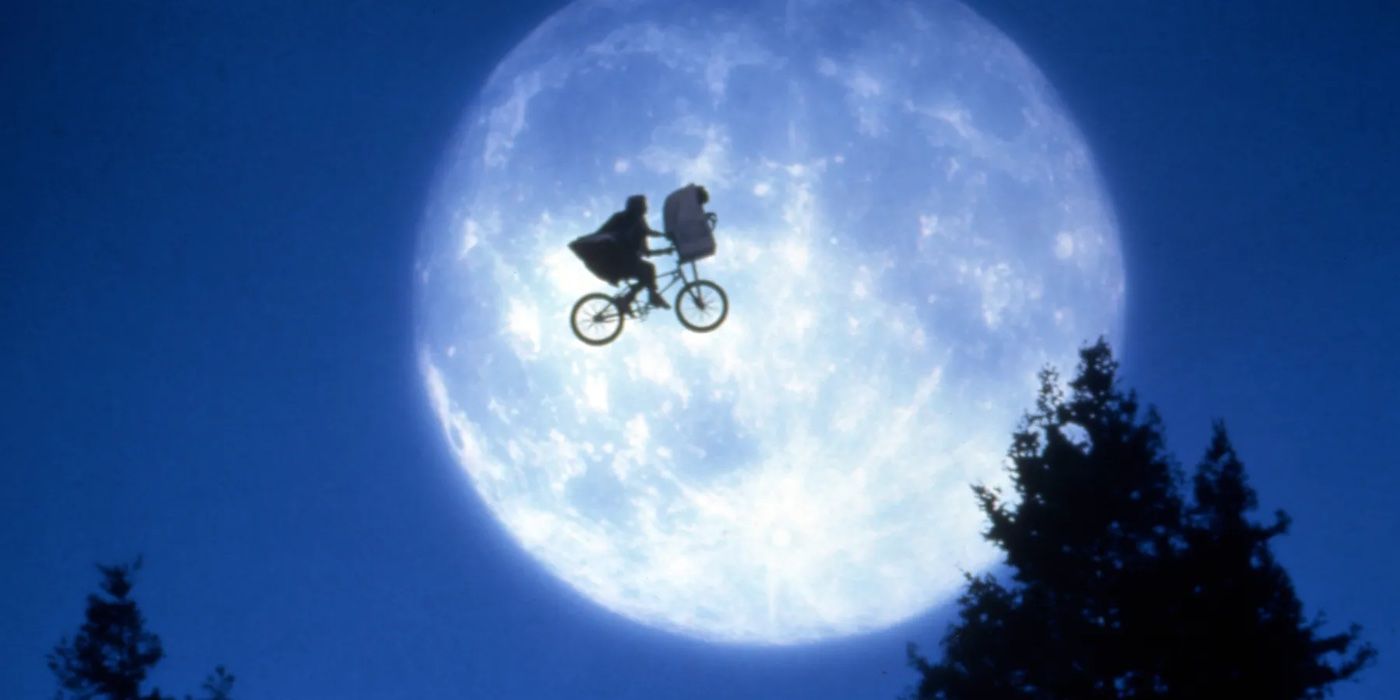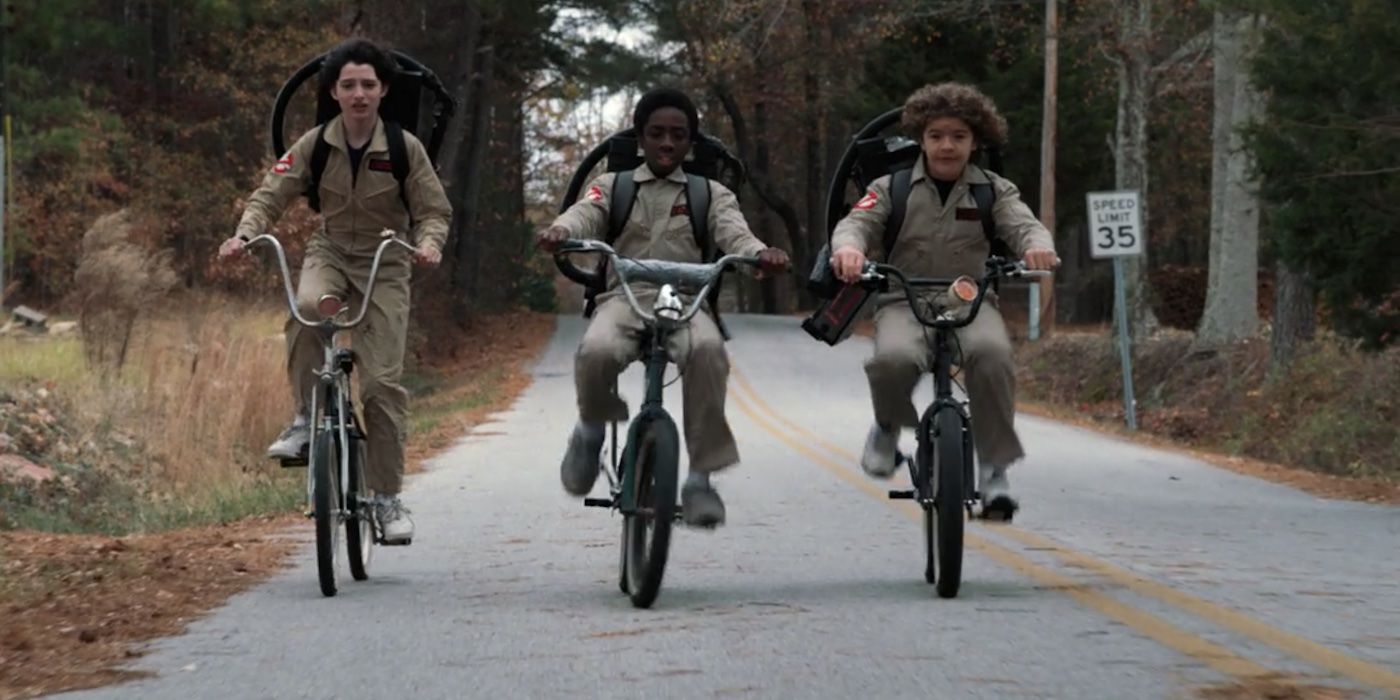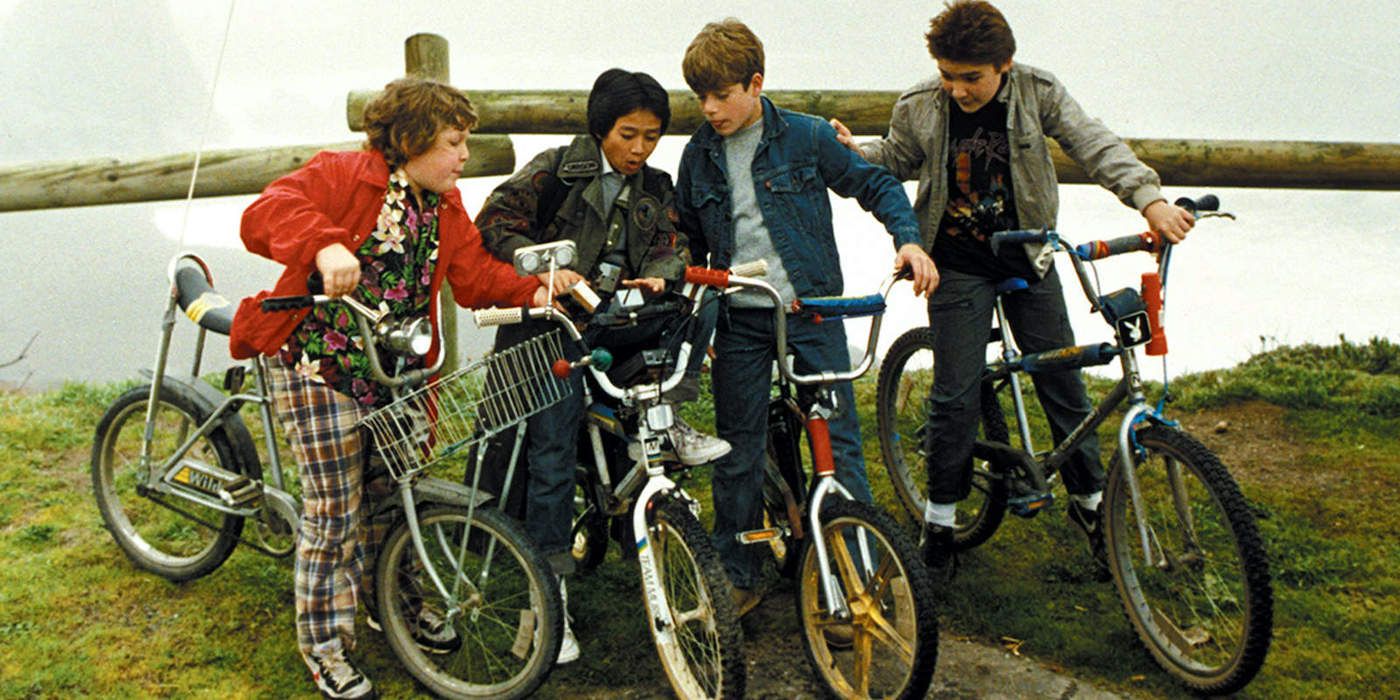The logo for Amblin Entertainment, Steven Spielberg’s era-defining production company, depicts a familiar scene: a silhouette of a boy on a bicycle, tilted upward as though it were about to fly, with a strange-looking creature in the basket. This is, of course, taken from the most famous scene in E.T. the Extra-Terrestrial, Spielberg’s 1982 classic about a young boy and his benevolent, Reese’s-loving alien friend. Not only does the logo represent one of the company’s biggest and earliest successes (E.T. was only their third movie, released just a week after another feature of theirs, Poltergeist), it neatly encapsulates why Amblin’s legendary 80s output remains beloved. Everything that’s ever been described as “Amblin-esque,” from Stranger Things to Paper Girls, is aiming for the lasting power of that flying bicycle framed by the full moon.
Perhaps it’s worth being more specific - or, depending on how one looks at it, less specific. After all, when a work is called “Amblin-esque,” it’s probably not being compared to Joe Versus the Volcano; Amblin’s output is varied and defining a genre by a production company was silly enough when people tried to do it with A24, and elevated horror. Instead, it’s likely being placed in a greater lineage of coming-of-age narratives, a lineage that is not limited to Amblin but, for various reasons, tapered off not long after Amblin’s heyday, leaving its movies to linger in our cultural memory. I am referring, of course, to the long and proud tradition of Kids on Bikes.
What is a Kids on Bikes narrative? In the traditional sense, it’s exactly what it sounds like. These stories involve a colorful cast of preteens with minimal parental supervision, riding their trusty bicycles around the neighborhood in search of adventure, or if at failing that, entertainment. The kids will often have a wide range of personalities and backstories - some cool, some nerdy, some rich, some poor - but they will all sound more like Hollywood screenwriters than they do actual kids. (Most agree that this is sometimes jarring, but significantly better than the alternative.) They’ll likely have elements of their character expressed through their bikes: the poor kid might have a rickety old thing, while the cool kid’s bike will be smooth, shiny, and invariably red. The adventures range from fantastical (E.T., Stranger Things) to heightened but not explicitly supernatural (The Goonies, perhaps the ultimate Kids on Bikes movie) to completely mundane (Stand By Me). Whatever the case, quips are traded, mischief is made, wonders are discovered, and lessons are (occasionally) learned.
Why the bikes? For one thing, it’s a matter of convenience. These stories are often set in the suburbs, which were designed for cars, or someplace rural; in either case, there’s not much within walking distance, especially for kids, which means a bike makes exploration and socialization a lot easier. But on a thematic level, a bike is a potent coming-of-age symbol. Getting your first new bike without training wheels is a smaller-scale version of getting your first car as a teenager. It indicates that your parents trust you enough to let you venture outside their careful supervision. It’s a status symbol that can be personalized with decals, gear, and/or baseball cards in the spokes. And most importantly, it offers freedom: the freedom to explore the world around you, to discover new people and new things, and to make your own fun on your own terms.
The appeal of Kids on Bikes has always been at least partially nostalgic. The Goonies, despite its potty-mouthed cast of snarky preteens and a theme song by Cyndi Lauper, is pure mid-century adventure-novel pulp, with a hidden pirate treasure and a gaggle of comically nasty villains. The dynamic of the titular Goonies - sharing a neighborhood, occasionally squabbling, but ultimately thick as thieves - is like an updated version of Our Gang/The Little Rascals, that old symbol of gee-whiz youthful innocence. Elsewhere, Spielberg mined his childhood for an imaginary alien friend that inspired E.T., and Stephen King celebrated and interrogated his all-American childhood with a novella that would eventually become Stand By Me. (He also wrote another, much more bloody than the typical American childhood, It, which would later be turned into an Amblin-tinged film series.) Kids could - and did - enjoy these movies (well, maybe not Stand By Me), but they were made by nostalgic boomers approaching middle age, and they resonated with parents who watched along with their children.
Nowadays, Kids on Bikes stories are still a source of nostalgia, but for very different reasons. For a long time, childhood was childhood, no matter what decade it was: maybe more kids stayed inside to watch TV, and there weren’t as many Calvin and Hobbes-style woods to explore as time went by, but, in broad strokes, the experiences were similar. The 80s was where that started to change. As it became increasingly common for both parents to work full-time jobs, parents began to panic about the whereabouts of their children: pictures of missing children were printed on milk cartons, daycare centers were accused of being run by Satanic pedophiles, and predators lurked in every shadow. Never mind that, then as now, the vast majority of abducted children are kidnapped by a family member. The world didn’t feel safe anymore; at 10 p.m. and at all other times, parents wanted to know where their children were.
Luckily for them, plenty of children were perfectly happy to stay home all day. Loads of children still loved to ride bikes or play sports, but if a kid didn’t want to leave the house, there were plenty of ways to keep themselves entertained. There was television, strong as ever with its array of sitcoms and detective shows, as well as a fascinating new channel called MTV. There were all sorts of new cartoons in the wake of Ronald Reagan deregulating the FCC, which now allowed them to be thirty-minute toy commercials in the vague shape of a plot. (Virtually every cartoon that forms the bedrock of 80s nostalgia, from Transformers to My Little Pony, sprung from this deregulation.) The VCR allowed kids to watch their favorite movies as many times as they wanted. And home video games, after a rough start to the decade with an industry-wide crash, began their long ascent to cultural dominance with the Nintendo Entertainment System. Fun was no longer something children had to create; now, it was readymade.
From there, one can draw a straight line to here. VCRs turned into DVD players, which turned into a theoretically infinite pool of media available at the push of a button, which turned into the Almighty Algorithm. Nintendo gained more competitors, video games advanced technologically and artistically, some scoundrel invented microtransactions, and now your kid can rack up your credit card bill on Fortnite so a muscular cat with a giant gun can wear a slightly different pair of slacks. Merchandise-driven franchises still enamor kids, except now they’re not cheap cartoons but superhero movies that make so much money they don’t want to make any other kinds of movies anymore. The Internet allows for friends to communicate without ever leaving the house - and if a kid does need to leave the house, they’ll always have their phones, which have been aptly called “the world’s longest umbilical cord.” And finally, regrettably, there is TikTok, which provides algorithmically-generated time sinks that can last all day: trips down the rabbit hole with no Wonderland at the bottom, just an endless descent to nowhere in particular.
I don’t mean to sound overly pessimistic. The Internet has made science fiction a reality, and a life led online can be rich and fulfilling. At its best, the Internet lets people, kids included, explore, learn, experiment, and play: create intricate models in Minecraft, satisfy curiosity with the click of a mouse, learn new skills and hobbies that can lead to a lifelong passion. But too often, it encourages a life without creativity, spontaneity, or adventure. An endless stream of content means you can consume and consume and consume and never create. Habits form, complacency sets in, and independent thought becomes a vestigial organ. Everything is already made for you, and far enough down the algorithmic rabbit hole, everything starts to look the same. And now, this process can start in the crib.
The nostalgic appeal of Kids on Bikes used to be for a childhood many people had; now, the nostalgia is for a childhood no one seems to have, at least not anymore. But, perhaps that’s not the way things must be. Perhaps the truest successor to Kids on Bikes classics is not the slavish homage of Stranger Things, but something like Gravity Falls: a show that doesn’t necessarily feature bikes, but does feature a celebration of carefree, adventurous childhood in the face of fantastical terrors. The appeal of these stories is not the past movies they remind us of, but of the simple joy of pushing up the kickstand and riding side by side with your friends into the unknown.




